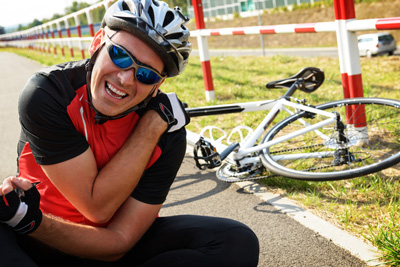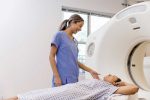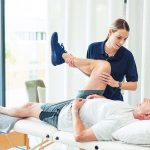Shoulder Labrum Tear Symptoms
Do you feel aching pain in the front or back of your upper arm or shoulder? Do otherwise normal shoulder movements cause pain? Do you have less strength or less range of motion when lifting or throwing, or feel popping, grinding, catching, locking, or less stability when moving your arm? These are symptoms of a Shoulder Labrum Tear. What exactly is a shoulder labrum tear?
A shoulder labrum injury, or dislocation, is an injury to the front or back ring of soft fibrous cartilage (called the labrum). The labrum surrounds the shoulder socket (glenoid) where the bicep tendon attaches to the upper arm bone (called the humerus). The labrum cartilage helps hold the head of the humerus in place and provides stability to the shoulder and upper arm.
Three Types of Shoulder Labrum Tears
- SLAP tear or lesion – is a tear front to back of the labrum cartilage with biceps tendon damage common. It is a more common injury among tennis, baseball and volleyball players, or for participants in activities with repetitive overhead motions. This OrthoConnecticut animation illustrates this process well.
- Bankart tear or lesion – involves a tear to the inferior glenohumeral ligament in the lower half of the glenoid socket. This type of dislocation of the shoulder is more common with younger people.
- Posterior labrum tear – is a rare posterior tear involving an injury to the back of the shoulder joint and represents 5-10 percent of shoulder injuries.
Why a Shoulder Labrum Tear Happens
How and why does this happen? Labral tears are difficult to prevent. People who experience this range from athletes to people 30 and over with overused and worn cartilage, to elderly with aging brittle cartilage. Younger people more often experience a labrum tear as a partially or completely dislocate the shoulder. What kinds of activities or accidents are prone to tears?
- A person taking a tumble to land with outstretched arms
- A violent blow while reaching overhead
- A direct hit to the shoulder
- A sudden tug on the arm
- A quick or snapping overhead motion
- Throwing a ball overhead, common with baseball players and pitchers
- Absorbing the hit and push impact of a volleyball
- Overhead or upward repetitive weightlifting movements
- A person golfing might strike the ground during a golf swing
- Catching something heavy
- Lifting a child or object overhead
Diagnosing Shoulder Labrum Tears
What can you do for a shoulder labrum tear? It’s important to see your physician, or orthopedic surgeon, for proper diagnosis and treatment options. A physical exam may include:
- For a SLAP tear the physician may hold the patients arm overhead to check for symptoms, and/or hold the arm in front of the body with palms facing downward while pushing down on the arm.
- For a bankart tear a patient may feel their shoulder is about to dislocate when their arm in placed behind their back.
- Your physician may also examine your neck to confirm pain is not coming from a pinched nerve.
What tests are used in diagnosing? To help review the severity of the tear plus check for other possible shoulder issues, sometimes these tests are conducted:
- X-ray
- CT scan (with contrast)
- MRI (with contrast)
- Arthroscopy of the shoulder may be used to diagnose. This involves a very small incision and the surgeon can look at the labrum on a TV screen. Sometimes the inspect, diagnose and treatment are done at the same time if the tear is small enough.
Treating Shoulder Labrum Tears
Non-surgical steps are usually the first treatment option including:
- Rest, ice or heat to treat pain
- Anti-inflammatory medication such as ibuprofen or aspirin as prescribed by your physician
- Cortisone injection is sometimes recommended for temporary pain control
- Physical therapy, including strengthening exercises for the rotator cuff muscles for shoulder stability, and strengthening the shoulder blade muscles
If surgery is necessary – what happens? Surgery, if required, has different options depending on level of tear or shoulder stability. For example:
- Small tears may be repaired with an arthroscopic repair – which can be as simple as removing the frayed edges and lose parts of labrum with a labral debridement.
- Unstable shoulders can also be repaired arthroscopically and might require surgery to anchor the bone and reattach the labrum.
- Open surgery are rarely used today for labral tears since the arthroscopic methods and techniques are less invasive and now more advanced.
- Post-surgery a sling likely for several weeks, followed by physical rehab for one to two months. It could take four to six months for a complete recovery especially if you participate in athletics.
OrthoConnecticut Can Help
Our physicians and physician assistants are available to help you if you’re experiencing shoulder pain or other mobility issues. Contact us today for an appointment and #getmovingCT.



















